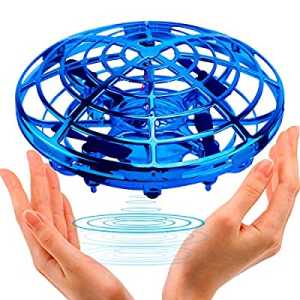
TAVI: What To Expect Before, During, And After The Procedure

Transcatheter Aortic Valve Implantation (TAVI) is a minimally invasive procedure used to treat patients with aortic valve stenosis, a condition where the heart's aortic valve becomes narrowed, making it difficult for blood to flow properly. TAVI is often recommended for people who are not candidates for traditional open-heart surgery due to age or other medical conditions. If you are scheduled for a TAVI procedure, it’s important to understand what to expect at every stage: before, during, and after the procedure. This guide will walk you through the process, ensuring you feel informed and prepared.
Before the TAVI Procedure: Preparation and Evaluation
1. Pre-Procedure Evaluation
Before undergoing TAVI, your doctor will conduct a thorough evaluation to determine if you're a suitable candidate. This may include a combination of physical exams, blood tests, and imaging studies such as:
- Echocardiogram: To assess the function of your heart and the severity of aortic stenosis.
- CT Scan: To examine the blood vessels and ensure the procedure can be safely performed.
- Coronary Angiogram: If there’s a risk of coronary artery disease, this test will help assess the blood vessels around the heart.
- Electrocardiogram (ECG): To check your heart's electrical activity and rhythm.
These tests help your cardiologist understand the condition of your heart and blood vessels and help plan the most effective approach for your treatment.
2. Discussing Medications and Lifestyle Adjustments
Your doctor will provide instructions regarding medications and lifestyle adjustments in the days leading up to the procedure. Some medications, like blood thinners, may need to be temporarily adjusted or stopped before the procedure. Be sure to follow these instructions closely to minimize any risks. You may also be asked to fast for a few hours before the procedure to prepare for anesthesia.
3. Emotional Preparation
It’s natural to feel anxious about any medical procedure, especially one involving the heart. Talk to your healthcare team if you’re feeling nervous. They can provide reassurance, answer questions, and discuss potential risks and benefits. Having a support system, such as family or friends, can also help ease your anxiety.
During the TAVI Procedure: What Happens in the Operating Room
1. Anesthesia
TAVI is typically performed under local anesthesia with sedation, so you’ll be awake but relaxed during the procedure. In some cases, general anesthesia may be used, particularly for patients who are more anxious or have additional health concerns. Your cardiologist or anesthesiologist will discuss the best option with you prior to the procedure.
2. Accessing the Heart
The procedure is minimally invasive and usually performed through a small incision in the groin area (transfemoral approach). However, in some cases, a different access point may be used, such as through the chest or the neck. Once the catheter is inserted, it will be guided through the blood vessels to reach the aortic valve.
3. Replacing the Valve
Once the catheter reaches the aortic valve, a balloon catheter is used to open the narrowed valve. Then, a new, biocompatible valve, usually made of a pig or cow tissue, is delivered and implanted within the old valve. The balloon is then deflated and removed, leaving the new valve in place. The procedure is generally done with the help of fluoroscopy (real-time X-ray) and ultrasound guidance to ensure precise valve placement.
4. Duration of the Procedure
The procedure typically takes 1 to 2 hours, depending on individual factors such as the complexity of the case and the type of valve used.
If you're concerned about heart health and need a trusted solution, don’t hesitate to contact Dr. Kalkekar’s Cura Clinic, your TAVI device closure specialist in Seawoods. We offer minimally invasive procedures to treat aortic valve disease and structural heart defects. Let us guide you through the process and help restore your heart health.
After the TAVI Procedure: Recovery and Follow-Up
1. Immediate Recovery
After the procedure, you’ll be monitored in a recovery room for a few hours. Most patients stay in the hospital for 1 to 2 days for observation and to ensure there are no complications. During this time, your heart function will be monitored, and pain management will be provided as needed. You may experience some mild discomfort at the incision site, but this can usually be managed with medication.
2. Possible Risks and Complications
Although TAVI is a minimally invasive procedure, there are still some potential risks, including:
- Bleeding or infection at the catheter insertion site
- Stroke or transient ischemic attack (TIA) due to blood clots
- Valve-related complications such as leakage
- Heart rhythm problems (arrhythmias) Your healthcare team will closely monitor you for these complications. In most cases, these risks are minimal, and the benefits of the procedure far outweigh them.
3. Post-Procedure Care
Once discharged, you’ll be given instructions for home care. You’ll likely need to limit physical activity for a few weeks to allow your body to heal. Follow-up appointments will be scheduled to monitor your progress, including checking the function of the new valve and ensuring there are no complications.
4. Return to Normal Activities
The recovery time for TAVI is generally much quicker than traditional open-heart surgery. Many patients can resume their normal activities within 1 to 2 weeks, although it may take a few months to feel fully recovered. Your doctor will advise you on when it’s safe to return to activities like driving, exercising, and lifting heavy objects.
Long-Term Outlook and Lifestyle After TAVI
1. Follow-Up Appointments
After the procedure, regular follow-up visits are essential to ensure that your new valve is functioning properly. These appointments may include echocardiograms, blood tests, and physical exams. It’s also important to continue managing any other health conditions, such as high blood pressure or diabetes, as these can affect the longevity of your new valve.
2. Lifestyle Adjustments
Following TAVI, adopting a healthy lifestyle is key to maintaining your heart health. This may include:
- Diet: Eating a heart-healthy diet that’s low in sodium, fat, and cholesterol
- Exercise: Engaging in regular physical activity, as approved by your doctor
- Medication: Taking prescribed medications, such as blood thinners, to prevent complications
- Smoking cessation: Quitting smoking to reduce strain on your heart and blood vessels
3. Quality of Life Improvements
Most patients experience significant improvements in their quality of life after TAVI. With the aortic valve now functioning properly, many report feeling more energetic, less short of breath, and better able to engage in daily activities.
Conclusion
TAVI is a transformative procedure for patients with aortic valve stenosis, offering an alternative to traditional open-heart surgery. While the procedure itself is minimally invasive, the benefits it provides in terms of improved heart function and quality of life are substantial. Understanding what to expect before, during, and after the procedure can help ease any anxiety and ensure a smooth recovery process. By following your doctor’s instructions and maintaining a heart-healthy lifestyle, you can enjoy the long-term benefits of your new aortic valve and improve your overall heart health.
Author Bio
Article Comments
No Comments!
At present there are zero comments on this article.
Why not be the first to make a comment?
Similar Articles
Search Pages
Upgrade User Account
account to full use of editor,
including hyperlinks
Article Categories
There are zero sub-categories in this parent category.
There are zero sub-categories in this parent category.











